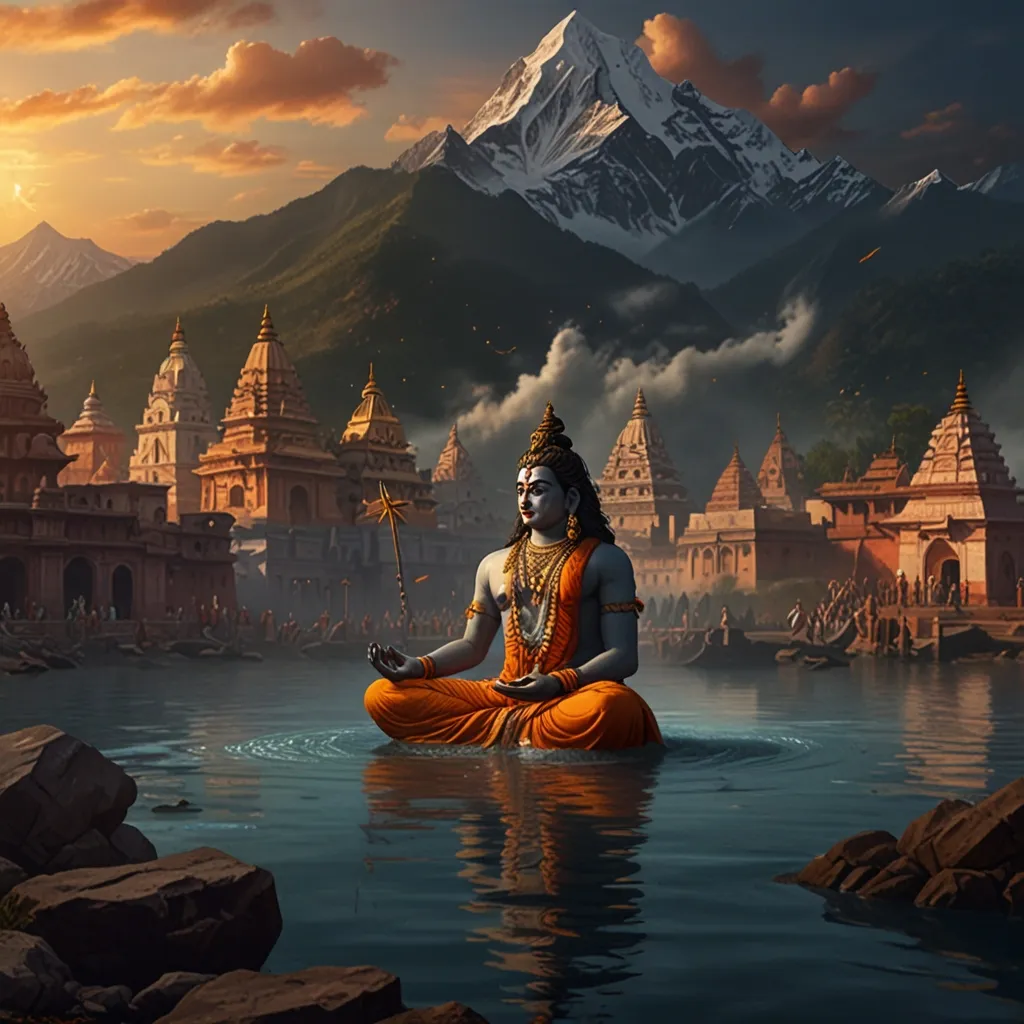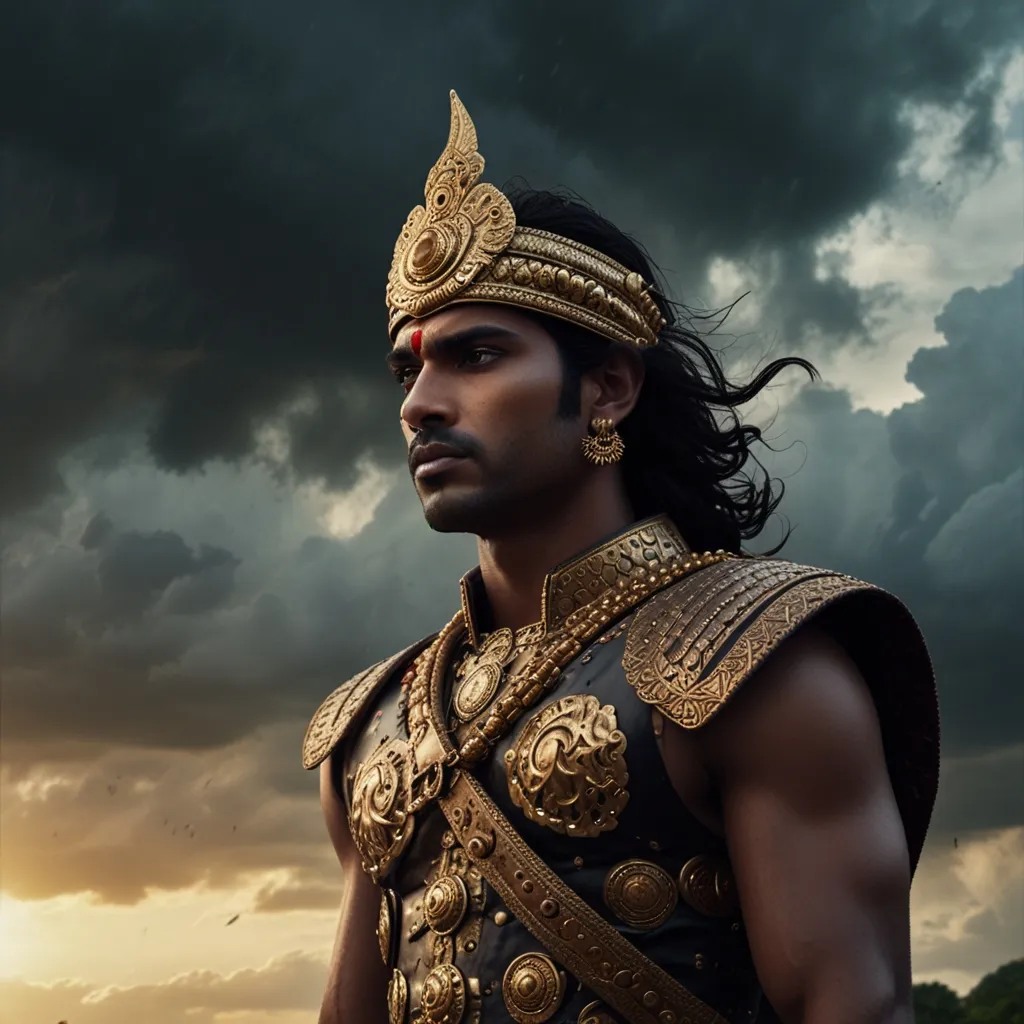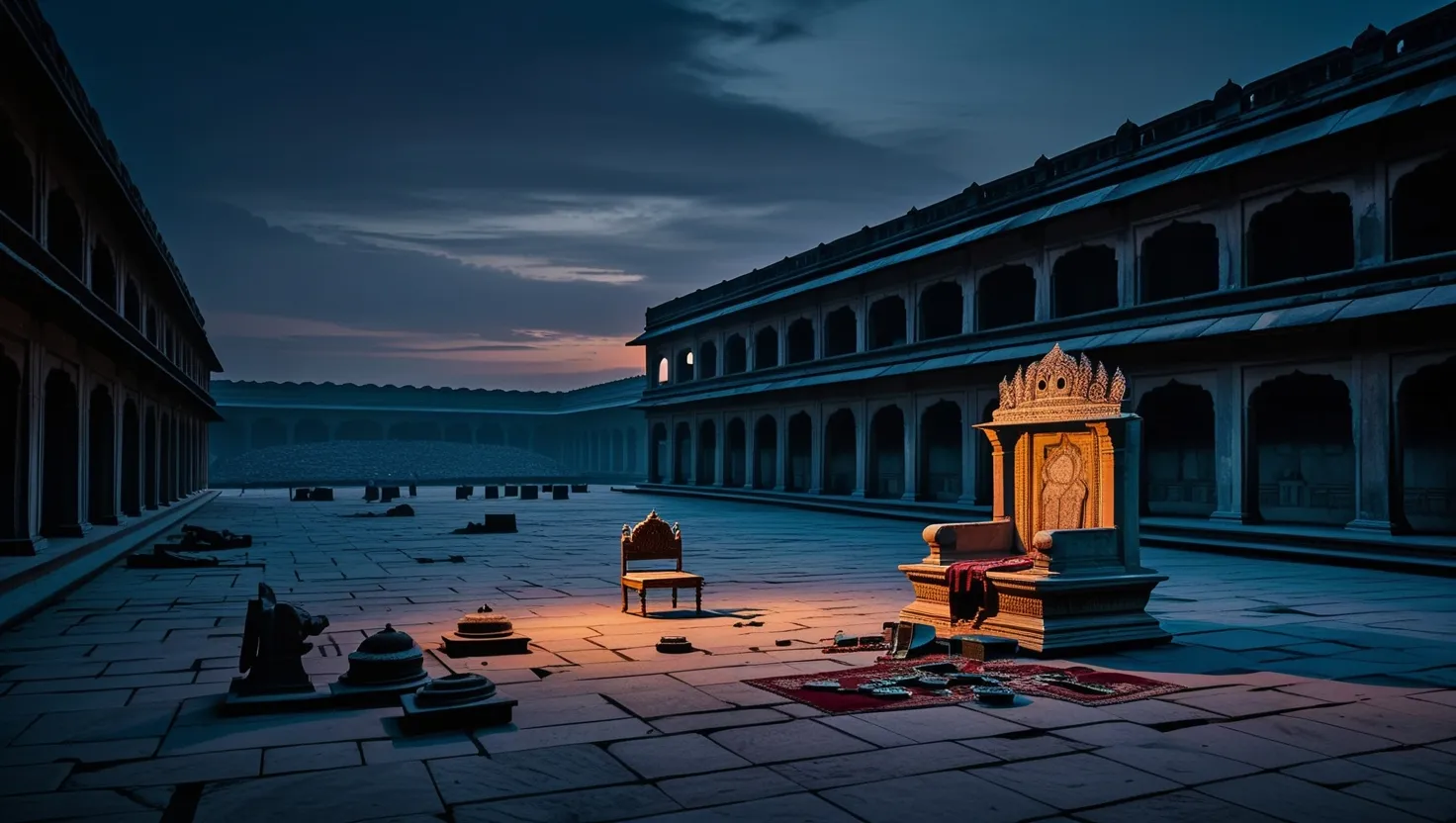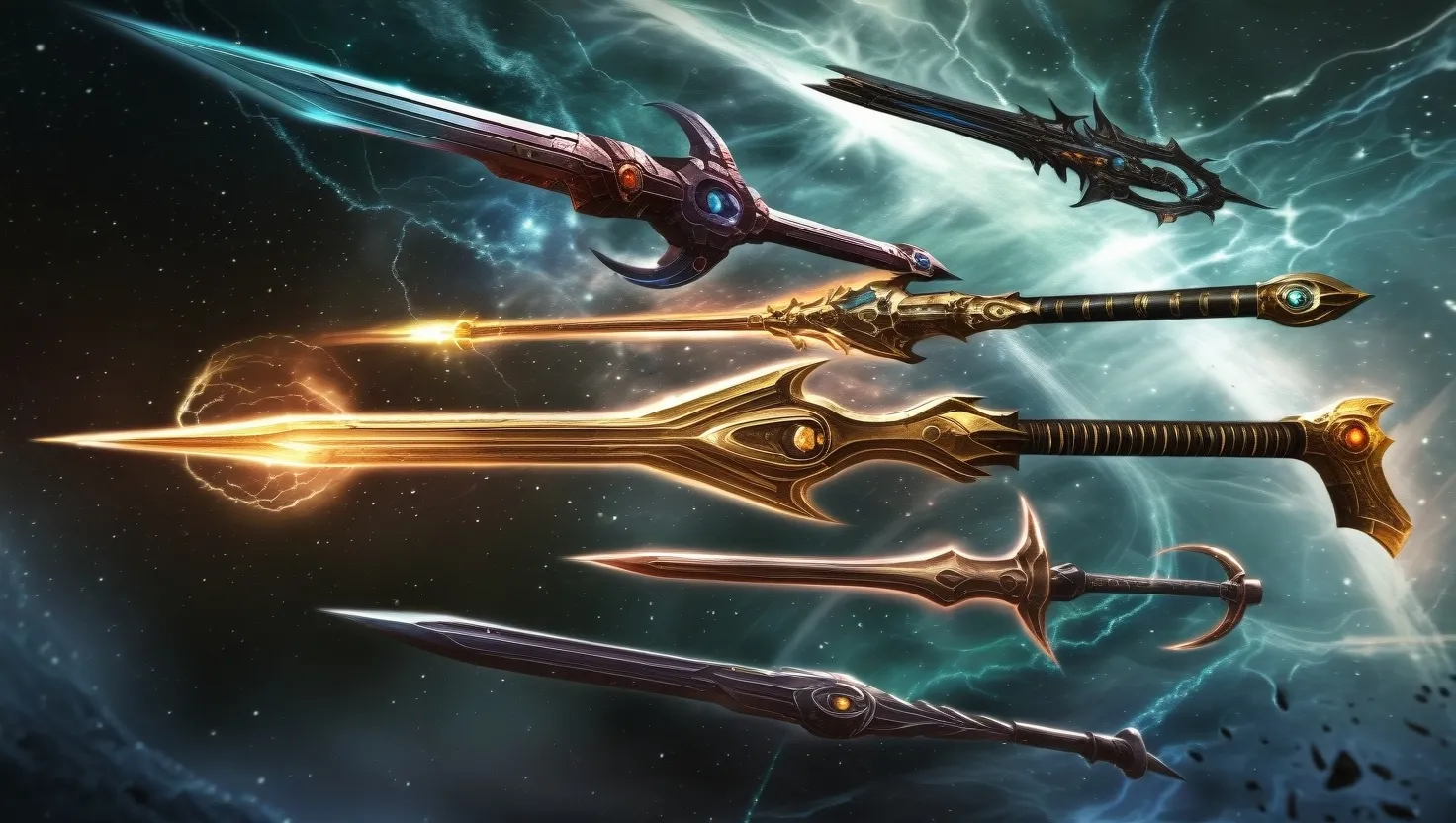In the ancient city of Ayodhya, a tale as old as time speaks of a king named Bhagiratha, who belonged to the lineage of the mighty King Sagara. Now, Sagara wasn’t just another ruler; he performed this grand ritual called the Ashwamedha Yagna, which was a big deal back then and was supposed to show his power over other kings. But things took a wild turn when Indra, the king of gods, got all jealous of Sagara’s ambitions. So, Indra did what any envious god might do – he stole the sacrificial horse and hid it deep down in the underworld, known as Patala.
This triggered quite the quest. Sagara’s 60,000 sons – yup, sixty thousand – went on an epic search for the horse, ending up at the hermitage of a sage named Kapila. Unfortunately, they jumped to conclusions, accusing Kapila of theft. Big mistake. Kapila, understandably peeved, reduced them all to ashes with his fiery gaze. Plot twist: without proper funeral rites, these souls were doomed to remain restless, stuck on earth.
Fast forward a few generations, and Bhagiratha steps up to the plate. Troubled by his ancestor’s fate, he sought out a way to liberate their souls. So, he consults with Sage Kapila, who tells him that the divine waters of the River Ganga, flowing in the heavens, have the power to purify the ashes and grant peace to those souls. And just like that, Bhagiratha’s mission became clear – he had to bring the Ganga down to Earth.
But no epic quest is without its challenges. Bhagiratha began by heading to the Himalayas and performing a seriously intense penance for a thousand years, hoping to get the attention of Lord Brahma. Brahma finally appears, impressed with Bhagiratha’s dedication, and agrees to grant him a boon. Bhagiratha, without skipping a beat, asks for the Ganga to be brought down to Earth. But Brahma drops a bombshell – the force of Ganga’s descent would be too much for Earth to handle. So, Brahma advises him to get Lord Shiva involved.
Next phase: Bhagiratha seeks out Lord Shiva and commits to another penance, this time for a year. Shiva, seeing Bhagiratha’s relentless spirit, agrees to help out. Shiva decides to catch the Ganga in his matted locks, dampening her mighty force so she doesn’t obliterate the planet on impact. But the goddess Ganga isn’t exactly thrilled about being controlled and plans to test Shiva’s mettle.
As the Ganga makes her descent, her powerful waters roar. But Shiva stands his ground and catches her in his hair, holding her there for several years. Bhagiratha, ever the patient devotee, prays to Shiva yet again. Pleased with Bhagiratha’s persistence, Shiva releases a gentle stream of the Ganga, allowing her to trickle down to Earth.
Navigating the landscape, the Ganga finally reaches the ashes of Sagara’s sons, purifying them and allowing their souls to ascend to heaven. Bhagiratha’s relentless efforts not only granted peace to his ancestors but also earned him immense respect from gods and mortals alike.
The story of Bhagiratha is a classic tale of devotion, determination, and faith. His tireless journey, known as Bhagiratha Prayatna, is celebrated as an example of the power one individual’s dedication can wield. The River Ganga, now often referred to as Bhagirathi in his honor, continues to meander through India, standing as a symbol of purification and liberation, carrying with her the legend of Bhagiratha’s unmatched resolve.
Bhagiratha’s legacy brewed a line of descendants, one of whom includes the legendary Lord Rama, a central figure shimmering brightly in Hindu mythology. Bhagiratha’s epic journey is a compelling reminder of the virtues of perseverance, devotion, and the eternal belief in the divine, imprinted in the vibrant tapestry of spiritual lore.
Bhagiratha’s tale also underscores the depth of ancestral reverence often found in mythology. His actions weren’t just about spiritual purification; they symbolized the enduring respect and obligation towards family and lineage, a concept deeply ingrained in many ancient cultures. It speaks volumes to the idea that one’s efforts, no matter how daunting, can ripple through time, touching lives and spirits beyond one’s immediate circle.
His saga, passed down through the ages, continues to inspire, representing the sheer power of human will when aligned with a divine purpose. Bhagiratha didn’t just seek to ease the suffering of his ancestors; he sought to restore cosmic balance, a theme echoing the timeless battle between chaos and order in mythological tales worldwide.
In today’s hustle and bustle, Bhagiratha’s story resonates more than ever. It reminds us to lean into challenges, to persist even when the odds stack high. It tells us that faith isn’t just about divine intervention but also about the sweat, tears, and relentless labor emblematic of human spirit and resolve.
In our own lives, we face myriad struggles and obstacles. And while ancient tales like Bhagiratha’s may cloak their lessons in gods and magical rivers, at their heart, they tell us that persistence pays off. Whether it’s a project, a dream, or a cause we deeply care about, Bhagiratha’s journey stands as a beacon, lighting the path of unwavering dedication and the transformative power it holds.
So next time life throws a curveball, think of Bhagiratha, who bridged the heavens and the earth with sheer will. Remember that every step taken in faith and perseverance, no matter how small, builds a conduit for change, bringing a little bit of heaven down to earth.






